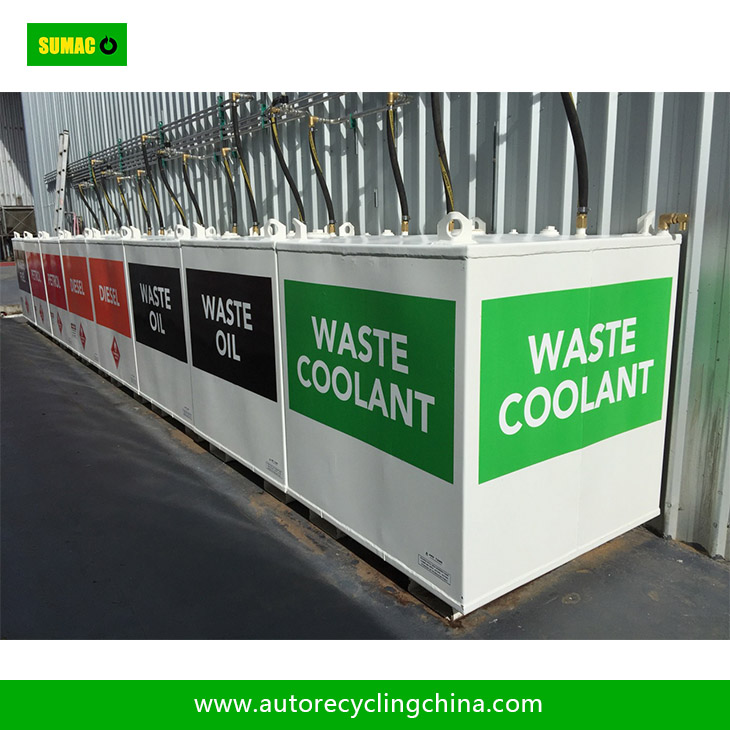Fuel cube tanks maintain safe, efficient operation through sophisticated pressure control systems that balance internal pressure, external conditions, and fuel properties. Here’s a breakdown of their core principles:
1. Pressure Regulation Basics
Fuel cube tanks use active and passive mechanisms to manage pressure differentials caused by:
- Temperature Fluctuations: As fuel heats (e.g., sunlight exposure), it expands, increasing vapor pressure. Cooling reverses this, creating a vacuum.
- Fuel Consumption/Refilling: Withdrawal or addition of fuel changes internal volume, affecting pressure.
- Chemical Reactions: Some fuels (e.g., biofuels) release gases during decomposition, elevating pressure.
2. Active Pressure Control Systems
These systems dynamically adjust pressure using sensors and actuators:
-
Pressure Relief Valves (PRVs):
- Spring - Loaded Design: Open at a preset pressure (e.g., 1.5 bar) to vent excess vapor, preventing over - pressurization.
- Vacuum Relief Function: Allow air ingress when internal pressure drops below atmospheric (e.g., during rapid fuel withdrawal), avoiding tank collapse.
-
Electronic Pressure Sensors:
- Monitor real - time pressure and trigger valves or pumps to maintain optimal levels.
- Integrate with fuel management systems for automated responses (e.g., adjusting venting rates).
-
Active Ventilation:
- Fans or blowers expel vapor during refueling or high - temperature periods, reducing pressure buildup.
3. Passive Pressure Control Elements
These rely on physical properties or materials:
-
Diaphragm or Bellows Systems:
- Flexible membranes expand/contract with pressure changes, absorbing shocks without venting.
- Common in sealed or low - emission tanks.
-
Porosity and Permeability:
- Some tanks use semi - permeable materials (e.g., specialized polymers) that allow slow vapor diffusion, equalizing pressure while retaining liquid fuel.
-
Expansion Chambers:
- Additional volume within the tank accommodates fuel expansion, reducing pressure spikes.
4. Safety and Redundancy Layers
To prevent catastrophic failures:
-
Burst Discs:
- Thin membranes designed to rupture at extreme pressures (e.g., 3 bar), providing a fail - safe release.
-
Dual - Valve Systems:
- Primary and secondary PRVs ensure redundancy in case of valve blockage.
-
Flame Arrestors:
- Prevent external ignition sources from entering the tank via vents, critical for volatile fuels.
5. Integration with Fuel Management
Modern fuel cube tanks synchronize pressure control with broader functions:
-
Vapor Recovery:
- Capture expelled vapors during refueling for reuse, reducing emissions and pressure buildup.
-
Fuel Level Monitoring:
- Pressure sensors assist in calculating fuel volume by accounting for vapor pressure effects.
-
Leak Detection:
- Unusual pressure drops may indicate leaks, triggering alerts for maintenance.
6. Material and Design Considerations
-
High - Strength Alloys:
- Tanks made of steel or aluminum alloys withstand high pressures without deformation.
-
Compliance with Standards:
- Adherence to codes like ASME BPVC (Boiler and Pressure Vessel Code) ensures safe pressure thresholds.
-
Sealing Technology:
- O - rings and gaskets prevent leaks while allowing pressure - induced movement.
7. Environmental Adaptation
-
Cold Climate Operation:
- Heated pressure sensors or insulation prevent freezing, which could cause valve malfunction.
-
High - Altitude Adjustments:
- Tanks compensate for reduced atmospheric pressure by recalibrating relief valves.
8. Maintenance and Testing
-
Regular Inspections:
- Ensure valves and sensors function correctly through pressure cycling tests.
-
Calibration:
-
Adjust sensors and PRVs to manufacturer specifications to maintain accuracy.

-
Adjust sensors and PRVs to manufacturer specifications to maintain accuracy.
